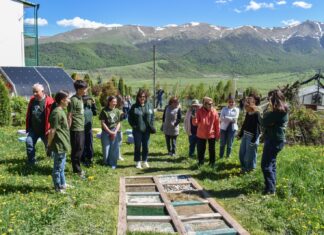SAN FRANCISCO — If you are in the mood for good coffee, no matter how you take it, Henry’s House of Coffee has you covered.
The coffee shop, in the Noriega district of San Francisco, does not just sell coffee and espresso, but soorj and its accoutrements.
It’s not just at the coffee shop, on 1618 Noriega St., in the city’s Sunset District, which can offer caffeine to those in need of a shot; they can buy coffee varieties on the website (www.henryshouseofcoffee).
The website offers a whole slew of suggestions, from how to coordinate catnaps with cups of coffee for maximal alertness as well as suggesting flavors based on preferences.

“I want to make sure whatever we are in control of is amazing. We want to make sure that coffee tastes like coffee. Our style is the classical coffee that I enjoyed growing up,” said owner and proprietor Hrag Kalebjian, the son of founder Henry.











